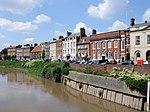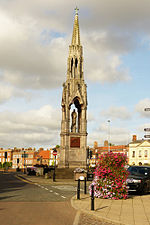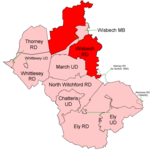Wisbech & Fenland Museum
1847 establishments in EnglandCharles DickensDecorative arts museums in EnglandFenland DistrictFossil museums ... and 10 more
Geology museumsLocal museums in CambridgeshireMuseums established in 1835Museums established in 1847Museums in CambridgeshireNatural history museums in EnglandPhotography museums and galleries in EnglandTheatre museumsUse British English from October 2019Wisbech

The Wisbech & Fenland Museum, located in the town of Wisbech in the Isle of Ely, Cambridgeshire, England, is one of the oldest purpose-built museums in the United Kingdom. The museum logo is W&F.
Excerpt from the Wikipedia article Wisbech & Fenland Museum (License: CC BY-SA 3.0, Authors, Images).Wisbech & Fenland Museum
Museum Square, Fenland District
Geographical coordinates (GPS) Address Nearby Places Show on map
Geographical coordinates (GPS)
| Latitude | Longitude |
|---|---|
| N 52.663857 ° | E 0.160976 ° |
Address
Museum Square
Museum Square
Fenland District
England, United Kingdom
Open on Google Maps









